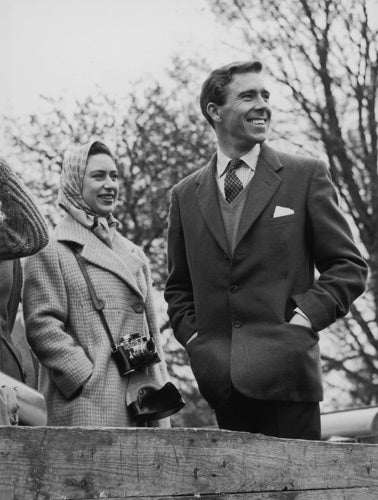Last Night's TV: Snowdon and Margaret: Inside A Royal Marriage, Channel 4<br />Jews, BBC4
A snappy portrait of a royal scoundrel

A successful portrait photographer pretty much has to be a serial seducer, charming each successive client into the belief that he (or she) only has eyes for them. But not all portrait photographers, one hopes, follow through quite so energetically as Antony Armstrong-Jones, cynosure of Swinging Sixties London and a byword among his friends for sexual appetite: "If it moves, he'll have it" was one of the comments recalled in Snowdon and Margaret: Inside a Royal Marriage, an intriguingly candid account of the ill-starred marriage between the Queen's younger sister and the socialite photographer.
Snowdon, the film made it clear, had top-class credentials as a lover – charisma, looks, glamour and a sense of sexual adventure – but was hopelessly ill-qualified to last the course as a husband. And, rather oddly, although it was almost entirely constructed from the memories of his friends and relatives, this film tilted the historical record back in Princess Margaret's favour, suggesting (in contrast to most of the coverage at the time) that she was more the injured party than him. Since Snowdon's friends must have consulted him before taking part (and Channel 4 must have nervously consulted lawyers), one takes it that he approved of a more truthful account emerging. It seems that he's putting his affairs in order.
Which in Snowdon's case takes some doing: his broadly uninterrupted philandering is one of the film's main themes. It revealed that he'd fathered a child with an ex-girlfriend at around the same time that he became engaged to Princess Margaret, and that he never really mastered the trick of marital fidelity. Had Princess Margaret led a less sheltered life, she would have steered well clear of him. And had he been less driven by the desires of his ruthlessly snobbish mother, he might have steered clear of a wedding, too, however genuine the spark of sexual chemistry between the couple was. But if you want to win the love and respect of a social climber, you can hardly do better than to marry into the Royal Family. Snowdon's mother apparently didn't visit him once when he was hospitalised by polio as a teenager, but he suddenly became the blue-eyed boy when it was announced that his palace connections were to be formalised.
The palace itself was less overjoyed, being a good deal warier about the bohemian baggage he brought with him than the love-struck Margaret. On this account, Antony Armstrong-Jones had started the Sixties early, enjoying, like a lot of the upper crust, the kind of sexual liberties that were only later to trickle down to the masses. He led, in the language of the time, a racy life, and there was an implication that he didn't mind straying across the central reservation from time to time. When the engagement was announced, he turned up at a gay friend's house to ensure that there were no embarrassing snapshots nestling among the pictures of a recent holiday (though Channel 4 had somewhere got hold of a picture of him camping around in a dress). And his first choice as best man, Jeremy Fry, had to be quietly bumped from the role when an old conviction for importuning Guardsmen in Hyde Park was discovered by the royal watchdogs.
Sadly, it turned out that marrying this degree of raffish self-indulgence to Princess Margaret's sense of the done thing (particularly when it came to royal protocol) was an unsustainable task. When pictures of Margaret consoling herself with Roddy Llewellyn turned up in the papers, he seized his chance and – "with great sadness" – hit the ejector button, despite the fact that a royal divorce was then an unprecedented catastrophe rather than standard operating procedure. At the time, he seems to have behaved with considerable cruelty to her, though he earned the palace's gratitude for keeping shtoom afterwards. One can't help wondering what they will make of this belated effort to take back a share of the blame.
Snowdon's mother didn't have any obvious excuse for her coldness, unlike the distant, detached mothers described in Jews, the second of Vanessa Engle's films about Jewish life in Britain. These mothers had all survived the Holocaust, although, according to the accounts of their children, survival had often left them emotionally cauterised. Many of them had waved goodbye to their own mothers at European railway stations, snatched from murder by the pre-war kindertransports of the late-Thirties. In some cases, the termini were dedicated to one-way journeys: Lela Black last saw her daughter and her mother on the platform at Auschwitz, a fact now embedded in the emotions of the daughter she had in Britain.
While the impact of Engle's film rested largely on the words of her interviewees, a word should be said for her way with archive film, which often goes beyond the merely illustrative. At one point, you saw footage of children dancing and skipping through a graveyard, an enigmatically potent emblem for the lives of second-generation refugees trying to grow up ordinary.
Subscribe to Independent Premium to bookmark this article
Want to bookmark your favourite articles and stories to read or reference later? Start your Independent Premium subscription today.

Join our commenting forum
Join thought-provoking conversations, follow other Independent readers and see their replies